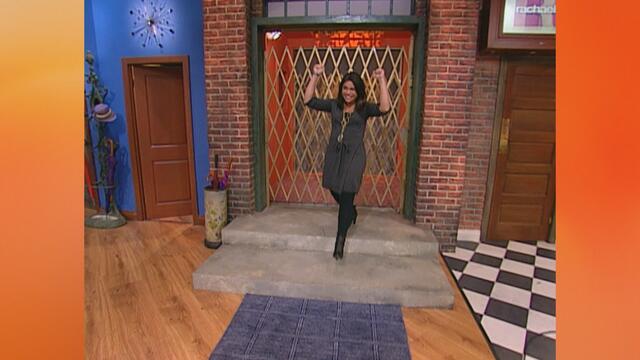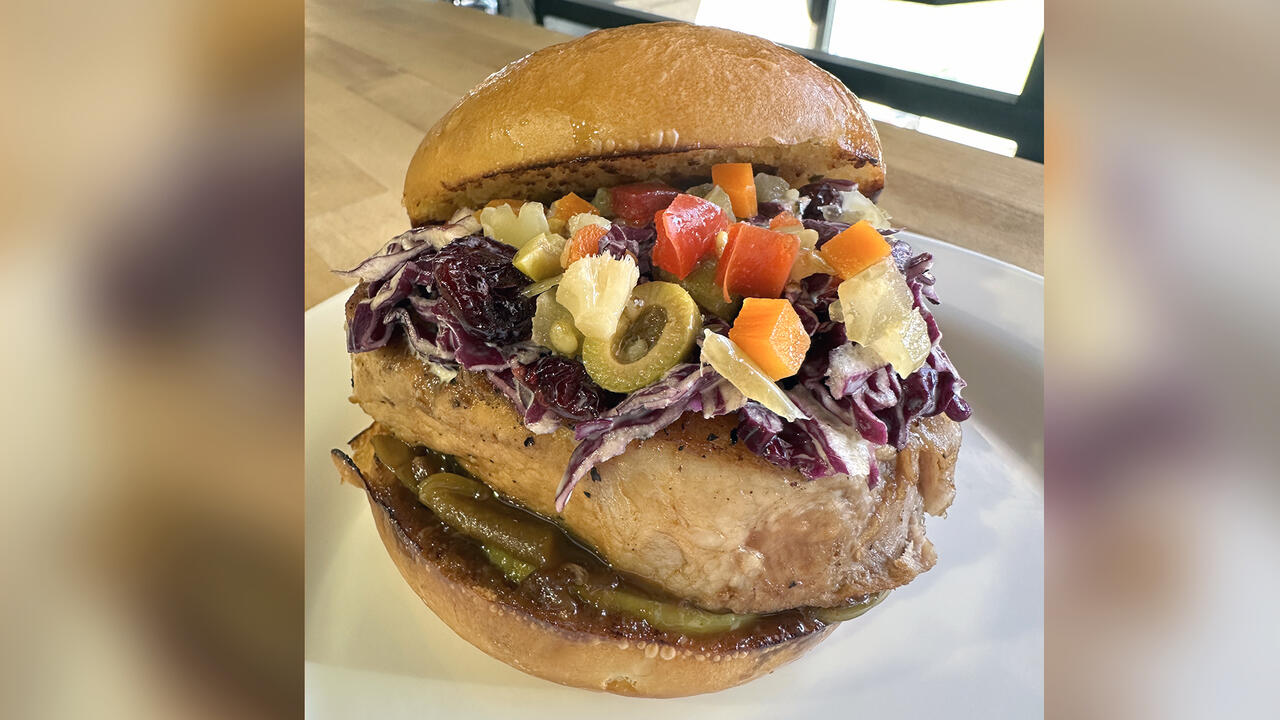

How To Make Your Own Hand Sanitizer | Dr. Ian Smith

Q&A with Organizational Pro Peter Walsh + Dermatologist Shares A…

Actor Hank Azaria + Freezer Meals + Artichokes 2 Ways with Rach

See Inside Barbara Corcoran's Stunning NY Apartment + It's Steak…

How to Make Chicken and Lobster Piccata | Richard Blais

Donnie Wahlberg Spills Details About NKOTB's First Ever Conventi…

Donnie Wahlberg + Jenny McCarthy Say Rach Is Such a "Joy" + Look…

The Best Moments From 17 Seasons of the Show Will Make You Laugh…

How to Make Crabby Carbonara | Rachael Ray

Rach Chats "Firsts" In Flashback From Our First Episode Ever In …

How to Make Apple-Cider Braised Pork Chop Sandwiches with Onion …

Rach's Chef Pals Say Goodbye to Show in Surprise Video Message

How to Make Sesame Cookies | Buddy Valastro

How to Make Tortilla with Potatoes, Piquillo Peppers and Mancheg…

How to Make Shrimp Burgers | Jacques Pepin

How to Make Spanakopipasta | Rachael Ray

Andrew McCarthy Chokes Up Discussing Emotional Trip to Spain wit…

Celebrity Guests Send Farewell Messages After 17 Seasons of the …

Celebrity Guests Send Farewell Messages After 17 Seasons of the …

Andrew McCarthy Teases Upcoming "Brat Pack" Reunion Special

Michelle Obama Toasts Rach's 17 Years on the Air With a Heartfel…
Coronavirus (COVID-19) has people more worried than ever about getting sick — so worried that hand sanitizer is actually selling out in stores across the country. Dr. Ian Smith is here to answer common questions about hand washing versus using hand sanitizer, demonstrate the proper way to wash your hands and show you how to make your own hand sanitizer at home.
Hand sanitizer isn't a replacement for washing your hands with soap and water, Dr. Ian stresses. The best way to defend against illness is to wash your hands thoroughly and avoid touching your face.
"The good old fashioned soap and water [method] is the best way to [prevent illness]," the doc says. "The CDC says 20 seconds; it can be up to 30 seconds."
Dr. Ian cites an experiment done by DailyMail.com — you can see blue light photos of bacteria on hands before washing, after washing for 15 seconds with soap and after washing for 30 seconds with soap in the video above.
The Right Way To Wash Your Hands
Most people don't wash their hands correctly, Dr. Ian says, so he's reiterating the proper technique.
- Get your hands wet first — it doesn't matter whether the water is cold or hot, because it won't get hot enough to kill bacteria or viruses, Dr. Ian says.
- Then, add soap and lather.
- Make sure you scrub your palms, the back of your hands, in between your fingers and under your fingernails.
If you can't get to soap and water, hand sanitizer isn't perfect, but it is better than nothing, Dr. Ian says. "If you're buying hand sanitizer, you want to look at the concentration of alcohol. The alcohol is what actually kills the pathogen," he says.
Because it's becoming more difficult to buy professionally manufactured hand sanitizer and it's so important to stay home, you should know how to make your own in case you need to fill that gap during the shortage. There are a lot of recipes circulating online, but the doc says that according to the CDC, for hand sanitizer to be effective it must have an alcohol content of at least 60%.
How To Make Your Own Hand Sanitizer
Ingredients:
- ⅔ cup 99% isopropyl rubbing alcohol
- ⅓ cup aloe vera gel
- Essential oils, optional
Directions:
- Mix ⅔ cup rubbing alcohol with ⅓ cup aloe vera gel.
- Add a few drops of essential oils of your choice, if desired, and mix again.
- Use a funnel to pour the mixture into a small 1-2 oz plastic or glass squeeze or spray bottle.
The rubbing alcohol acts as a disinfectant against bacteria and viruses, while the aloe vera gel soothes your skin and adds moisture to keep your hands from drying out due to the alcohol. It also makes it easier to apply and adds thickness.
In addition to adding fragrance to your hand sanitizer, the essential oils you choose may help protect against germs. For example, thyme and clove oil have antimicrobial properties that fight bacteria. If you're using antimicrobial oils, only use a drop or two, since those oils tend to be very powerful and might irritate or dry out your skin, the doc says. Other oils, like lavender or chamomile, may help soothe your skin.
The Right Way To Apply Hand Sanitizer
Just like there's a right way to wash your hands, there's a right way to apply hand sanitizer, according to Dr. Ian.
- Apply enough sanitizer to completely cover both hands.
- Rub your hands together, palm to palm.
- Rub the back of each hand with the palm of the other hand.
- Spread sanitizer over and under fingernails and between fingers.
- Keep rubbing hands together until they are dry. Do not dry with a towel.


